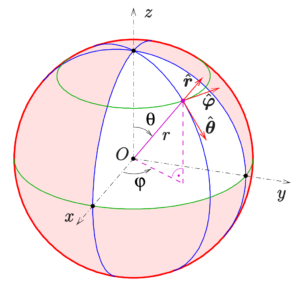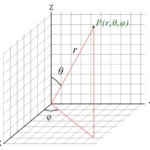In this article, we will learn how to calculate the average rate of change. The concept of the average rate of change is fundamental in physics, particularly in kinematics and thermodynamics.
It provides a measure of how a quantity changes with respect to another variable over a specified interval. In simple terms, the average rate of change gives us an idea of the “speed” at which a variable is changing.
Calculating the Average Rate of Change
What is the average rate of change of a function?
The average rate of change of a function \( f(x) \) over the interval \([a, b]\) is defined as:
\[
\text{Average Rate of Change} = \frac{f(b) – f(a)}{b – a}
\]
Here, \( f(a) \) and \( f(b) \) are the values of the function at points \( a \) and \( b \) respectively, and \( b – a \) is the length of the interval.
Mathematical Representation
Let’s consider a function \( f(x) \) defined over the interval \([a, b]\). The average rate of change \( \Delta f/\Delta x \) is given by:
\[
\frac{\Delta f}{\Delta x} = \frac{f(b) – f(a)}{b – a}
\]
Example
Suppose we have a function \( f(x) = x^2 \) and we want to find the average rate of change over the interval \([1, 3]\).
\[
\frac{\Delta f}{\Delta x} = \frac{f(3) – f(1)}{3 – 1} = \frac{9 – 1}{2} = \frac{8}{2} = 4
\]
Applications in Physics
In physics, the average rate of change is often used to describe average velocity, average acceleration, and rate of heat transfer, among other phenomena. For example, the average velocity \( \bar{v} \) of an object moving along a straight line is given by:
\[
\bar{v} = \frac{\Delta x}{\Delta t}
\]
where \( \Delta x \) is the change in position and \( \Delta t \) is the change in time.
Limitations of Average Rate of Change
The average rate of change is a useful measure for understanding how a function behaves over a specific interval. However, it does not provide information about the function’s behaviour at individual points within that interval. For that, you would need to study the concept of instantaneous rate of change, which leads to the derivative in calculus.
Questions and Answers
Can the average rate of change be negative?
Answer: Yes, a negative average rate of change indicates that the function is decreasing over the given interval.
Is the average rate of change the same as the instantaneous rate of change?
Answer: No, the average rate of change gives us a “global” view over an interval, whereas the instantaneous rate of change is specific to a single point.
How is the average rate of change different from the slope of a line?
Answer: The average rate of change over an interval is essentially the slope of the secant line that passes through the points corresponding to the endpoints of the interval.
Is the average rate of change always constant?
Answer: No, the average rate of change can vary depending on the interval chosen.
How does the concept of average rate of change extend to multivariable functions?
Answer: For multivariable functions, the average rate of change can be generalized using partial derivatives, which measure how the function changes with respect to one variable while keeping others constant.
Can the average rate of change be zero?
Answer: Yes, if a function returns to its initial value over an interval, the average rate of change will be zero, even if the function undergoes fluctuations within the interval.
What is the geometric interpretation of the average rate of change?
Answer: Geometrically, the average rate of change is the slope of the secant line connecting two points on the function’s graph over the interval \([a, b]\).



